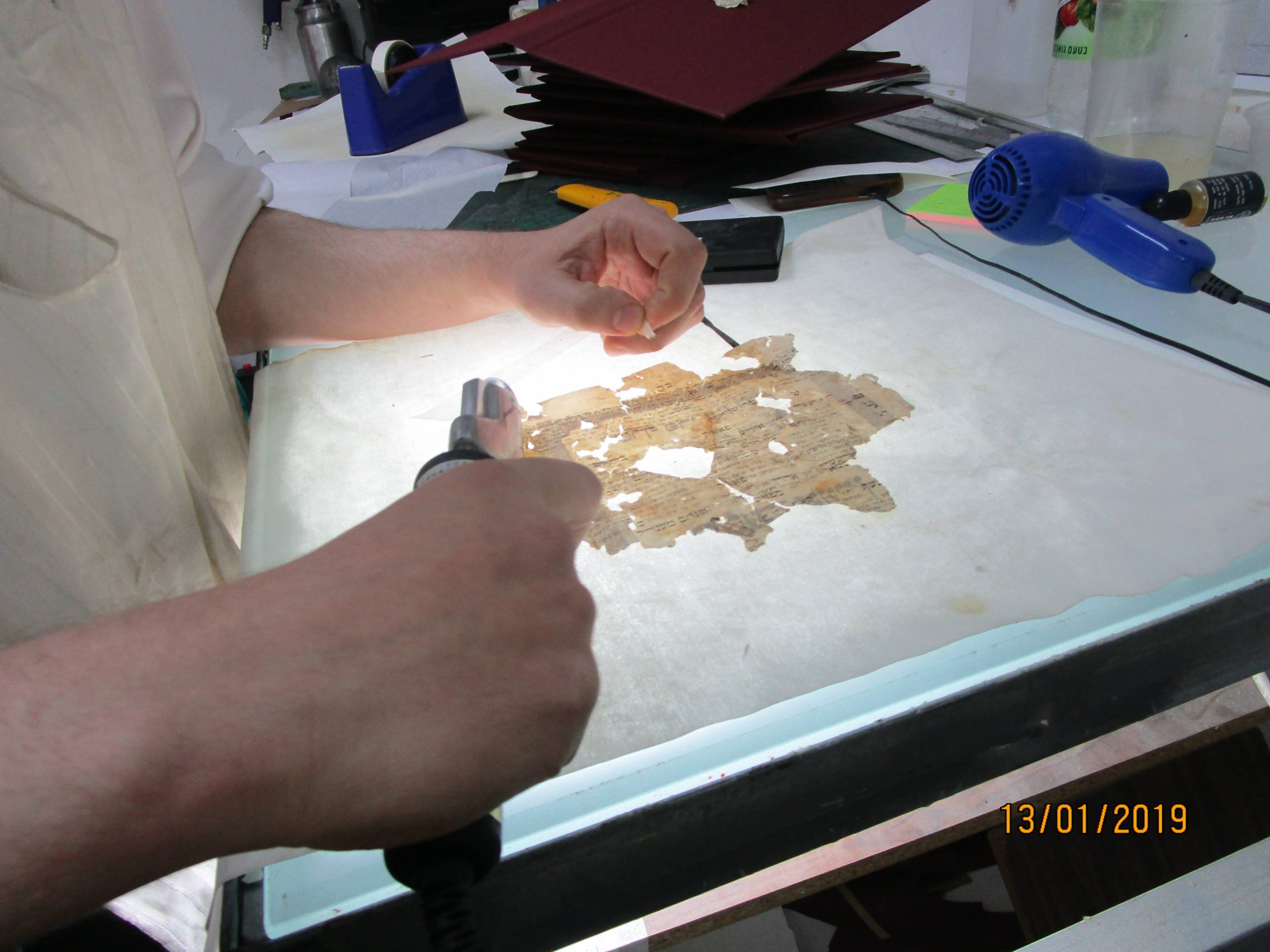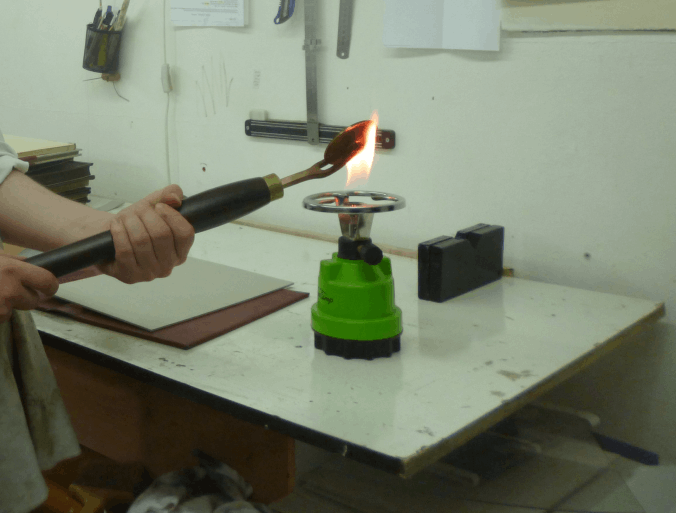Everything you wanted to know about the artistic paper restoration process:
Many of the available binding materials are acidic and sometimes even destructive – the cardboard, kraft paper, the wrapping materials and sometimes the glue – and we have to be very careful not to bind with them. They can destroy the book over the years, and even attract bookworms.
At the first stage of the restoration process, we will first examine the possibility of disassembling the book. First we must number the pages or photograph them, and carefully disassemble the book. We will unravel the sewing threads, disassemble the pages sheet by sheet, and now that we have a pile of pages, we can handle each page separately.
If the book is acidic, we will measure the acid level in the paper with a special device. If the acid level is high, we need to use special materials to lower the acid.

Paper expands in water, and the water opens the paper fibers. So, before washing the paper, it is very important to clean its dust with a fine brush, to prevent dust and dirt from settling inside the paper fibers.
Tougher dirt will be cleaned with a specially made hard sponge, and sometimes has to be scraped off with a surgical knife, with extreme caution.
We then wash the pages, immersing them in lukewarm water. This must be done carefully and with the appropriate equipment, so as not to damage the paper. If the book has age stains, grease or hard dust, we will add a little alcohol and a special soap for washing pages.
To treat the acid we add a special substance made of calcium (calcium hydroxide) measured according to the acid level, which removes the acid and strengthens the paper.
We remove paper stickers (which the restorers of previous generations stuck when they wanted to hide holes …). To remove sellotape glue, a special substance is necessary, made from an organic compound at a very specific temperature. This requires professionalism and delicate work, to separate the glue from the paper without damaging the text.
Sometimes, especially in books kept in damp warehouses and the suchlike, we find mold and fungus which appear as bright red spots, or black dots, and as a kind of white powder between the pages of the book. The fungus causes the paper to weaken until it crumbles, and the fungus needs to be killed so that it doesn’t spread to the entire book. This is done with a substance that acts as an antibiotic, which stops the fungus from spreading and kills its activity, but the affected color and appearance cannot be rectified.
Manuscripts, which cannot be washed in water, are dry-cleaned with special substances, in order to remove glue.
In order to reduce acid from manuscripts, it is necessary to use water. Therefore, to prevent the letters from being erased, the ink must be strengthened with another substance, which preserves and strengthens the ink and the writing. This requires much professional knowledge to process and to be used correctly. Once the ink is properly treated, the manuscript can be put into water without damaging the script.
If this treatment doesn’t work and the water still damages the ink, or if there are reasons not to disassemble the book, it is possible to use a special spray that removes the acid and strengthens the paper. Although this is a much simpler operation, it is of lower quality and also far more expensive

If this treatment doesn’t work and the water still damages the ink, or if there are reasons not to disassemble the book, it is possible to use a special spray that removes the acid and strengthens the paper. Although this is a much simpler operation, it is of lower quality and also far more expensive.
When it is necessary to repair the paper, and many times even add paper; fill in bookworm holes; repair tears; or strengthen the edge of the paper to resew them; there is an option to mechanically fill the paper and add paper with Japanese paper, or it can be done manually. Each case is judged individually, as great professionalism is required to match the color of the paper to the original paper, so that the restoration isn’t noticeable. That is our goal – to be as authentic as possible.
Finally, after the paper is dried, the paper must be returned to its original status, to close the fibers and the expansion of the paper from the water, and this is done by using an additional substance.
Now comes the sewing stage: The pages are rearranged according to the numbering, or by using the photos taken before disassembling the book. The sewing will be appropriate to the book’s style, or according to the customer’s request. Fine linen threads are used so that the pages don’t tear when turning the pages. We coat the threads with wax and dye them in a color that matches the color of the book and its age, in order to give the book the best possible similarity to its original, even with the small details that are hardly visible.
If the customer wants to use the original cover, we have to be careful to calculate in advance the size of the added paper, so that it isn’t thicker than the original. Also, the width of the sewing threads must exactly match the original. For example, if we have 40 sheets, and in each one we added just half a millimeter to the sewing thread, it will no longer be possible to return the book to its original cover! That is why planning and forethought is very important in this work.
Our glorious past cannot be restored
its fragrance – can be restored
Contact us now for a professional quote:
Created by TO BEE | 055.679.0288